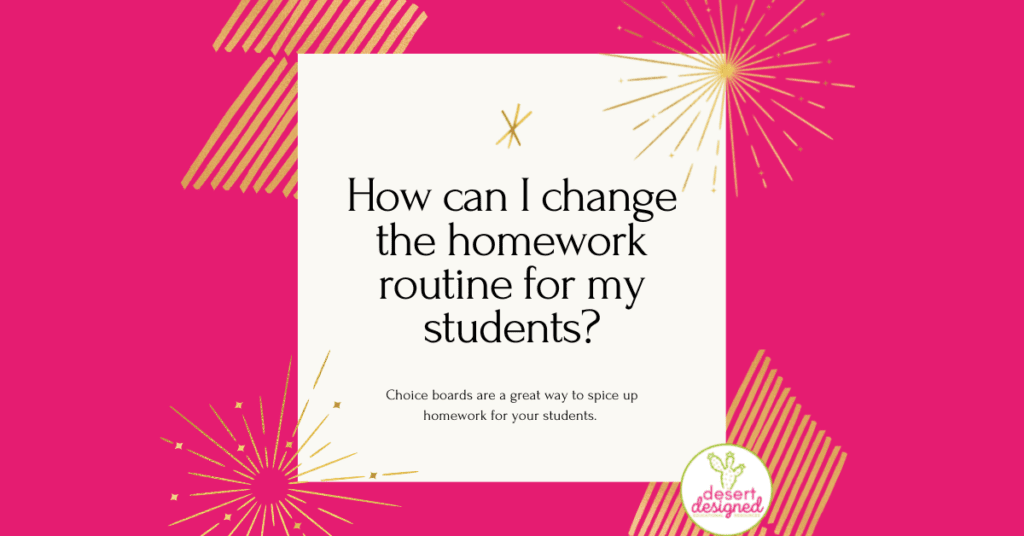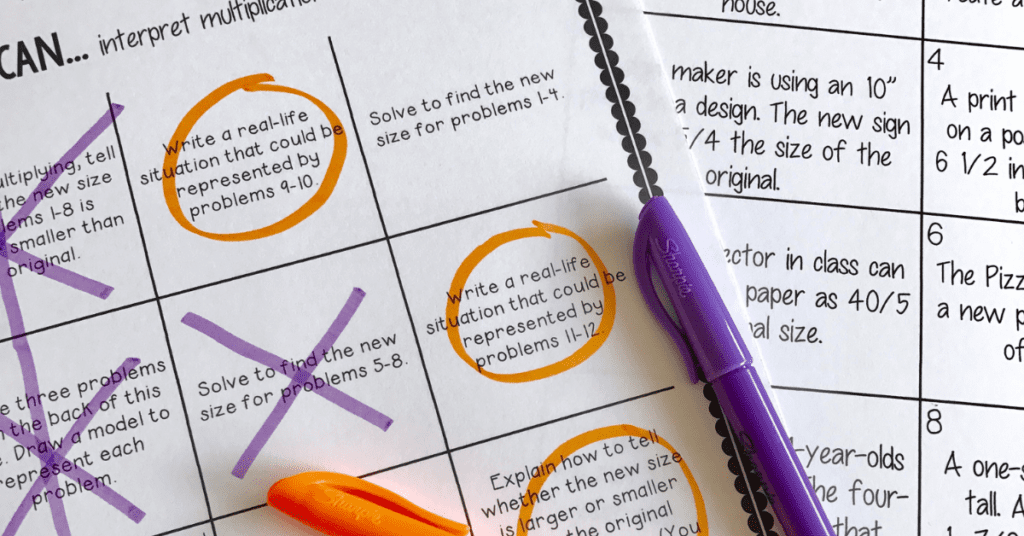
Traditional math homework can do more harm than good. This homework can be tedious, sapping the love of learning from students. Often, it’s not even related to the work that the teacher covered in class. Struggling students may take home math homework and continue to practice a skill incorrectly. Parents who aren’t familiar with newer methods and strategies can become confused and frustrated when trying to help their children. Finally, preparing traditional math homework takes a teacher time to plan, copy, and review the work in class. Now, let’s look into alternatives to doing this type of math homework.
Looking for Alternatives for Traditional Math Homework? Look No Further
Read on for various alternatives to a more traditional type of math homework that you can assign to your students.

Math Homework Alternative #1: Real-World Math Hunt
In this math homework alternative, you would assign your students the task of finding real-world math at home or around them that resembles the type of math you are covering in class. For example, if you teach decimals, challenge your students to find decimals in the real world. Students can take photos or screenshots and add them to a google slide or describe them on paper.
Next, you can give time for students to share these with the class, with a partner, or in small groups.
Math Homework Alternative #2: Choice Boards
Choice boards are a great way to differentiate for various students subtly. For choice boards to be effective, I recommend that you ensure more choices available than those required.

I prefer using choice boards with a variety of different learning modalities represented. In the choice boards for sale in my store, students might do any of the following during a given week:
- Basic calculations
- Explain their thinking in writing
- Create models
- Write problem(s) to represent the given skill
- Draw a picture
- Create problems for a friend to solve
- Solve the problems presented by a friend
Math Homework Alternative #3: Create-a-Problem
Having students create math problems can be great for so many reasons. You can differentiate the expectations of various students by changing the number of problems you expect them to create. Some students can create word problems that match the current skill, while others can work on forming problems of basic calculations.
I also love this type of homework because if you introduce a topic and are concerned about students practicing the strategies incorrectly, you can have the students ONLY create the problems but not solve them. Having students create their problems will help them think about the math involved without actually calculating themselves.
If you have students write but not solve the problems they create, this can also provide an opportunity for solving these problems in class. If you are concerned that the problems may not entirely address the standard correctly, be sure to go over them as a whole group. Additionally, you could have students work out the problems in small groups or with partners.
One final thing I like to do with this homework is to collect or gather the responses, either through paper or digitally, and then use the problems in upcoming lessons. The students get so excited about seeing their work come to life in the classroom!
Alternative #4: Teach Someone

One way to be sure you understand the material is to teach it to another person. When I learn something new, if I can share my newfound knowledge with another person, I am also more likely to retain that information. As we share newly acquired skills, the act of telling another person about them or teaching how they work helps us anchor them into our memories.
With the Teach Someone math homework alternative, students will teach the topic to someone for homework. One concern I have heard about this is that sometimes parents are busy or no one is around. I have talked to my students about playing school, teaching the skill to a pretend audience instead of a live audience.
A high-tech way to use ‘teach someone’ is for students to record themselves teaching this skill to a virtual audience. Flipgrid is a great tool that allows students to record themselves and post their recordings in a safe online environment.
Alternative #5: Boom Cards

Boom Cards on Boom Learning are an excellent tool for targeted, differentiated skill practice. If your students have access to technology from home, I highly recommend using them to assign homework to your students.
I love how specific I can be about what I assign to my class to ensure that I dial it down to the precise skill I am working on.
If you’ve never used Boom Learning before, check out this article about Getting Started with Boom Learning for more information about how the program works.
These Math Facts Boom Cards are a favorite to assign to work on the math facts they need to be successful. If you already know and love Boom Learning and teach upper elementary, check out my complete Bundle of Upper Elementary Math Boom Cards!
Math Homework Doesn’t Have to Be Boring.
Don’t forget to check out the Boom Cards and Choice Boards available in my TpT Store to help save you time and frustration when assigning math homework!





